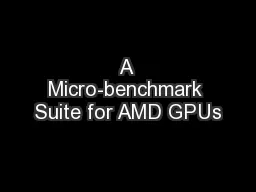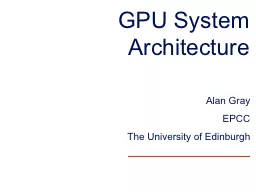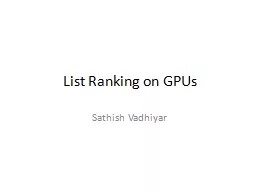PPT-A Micro-benchmark Suite for AMD GPUs
Author : kittie-lecroy | Published Date : 2015-10-26
Ryan Taylor Xiaoming Li Motivation To understand behavior of major kernel characteristics ALUFetch Ratio Read Latency Write Latency Register Usage Domain Size Cache
Presentation Embed Code
Download Presentation
Download Presentation The PPT/PDF document "A Micro-benchmark Suite for AMD GPUs" is the property of its rightful owner. Permission is granted to download and print the materials on this website for personal, non-commercial use only, and to display it on your personal computer provided you do not modify the materials and that you retain all copyright notices contained in the materials. By downloading content from our website, you accept the terms of this agreement.
A Micro-benchmark Suite for AMD GPUs: Transcript
Download Rules Of Document
"A Micro-benchmark Suite for AMD GPUs"The content belongs to its owner. You may download and print it for personal use, without modification, and keep all copyright notices. By downloading, you agree to these terms.
Related Documents














